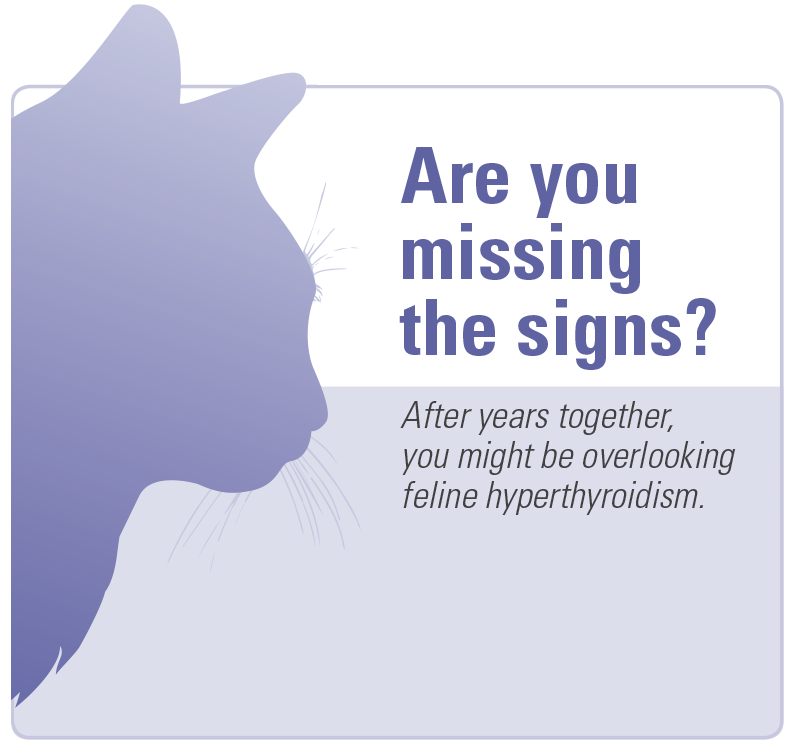COULD YOUR CAT HAVE HYPERTHYROIDISM?
In many countries, at least 1 out of 10 cats aged 9 years old and older are hyperthyroid.1-4 Seventy percent of veterinarians asked reported that hyperthyroidism in cats is underdiagnosed because the signs are subtle and can be hard to recognize.5
Could you be missing the signs?
Common signs that may seem like growing older on the outside might actually be an underlying condition that could be managed if detected. Discuss whether your cat may be at risk of hyperthyroidism with your veterinarian.
As cats reach the age of 9 years and older, regular veterinary care is even more important. Visit your veterinarian twice a year for regular wellness checks.6 Keep your cat happy and healthy throughout its later years.

1. Boretti FS, Siber-Ruckstuhl NS, Gerber B, et al. (2009) Thyroid enlargement and its relationship to clinicopathological parameters and T(4) status in suspected hyperthyroid cats. Journal of Feline Medicine and Surgery. 11:286-292
2. Wakeling J, Elliott J, Syme H. (2011) Evaluation of predictors for the diagnosis of hyperthyroidism in cats. Journal of Veterinary Internal Medicine. 25:1057-1065.
3. Gallagher B, Mooney CT. (2013) Prevalence and risk factors for hyperthyroidism in Irish cats from the greater Dublin area. Journal of Veterinary Internal Medicine. 27:689.
4. Sassnau R. (2005) Epidemiologische Untersuchungen zur Pravalenz der feline Hyperthyreose. Deutsche Veterinarmedizinische Gesellschaft Service GmbH.
5. Data on file. 2014 (Research conducted in UK, France, Spain, and Italy).
6. “Senior Pet Care (FAQ).” American Veterinary Medical Association, Feb. 2009. Accessed via web May 2014.
While hyperthyroidism is commonly found in cats aged 9 and older, it can be found in younger cats. Please see your veterinarian for a screening if you notice any of these signs.

